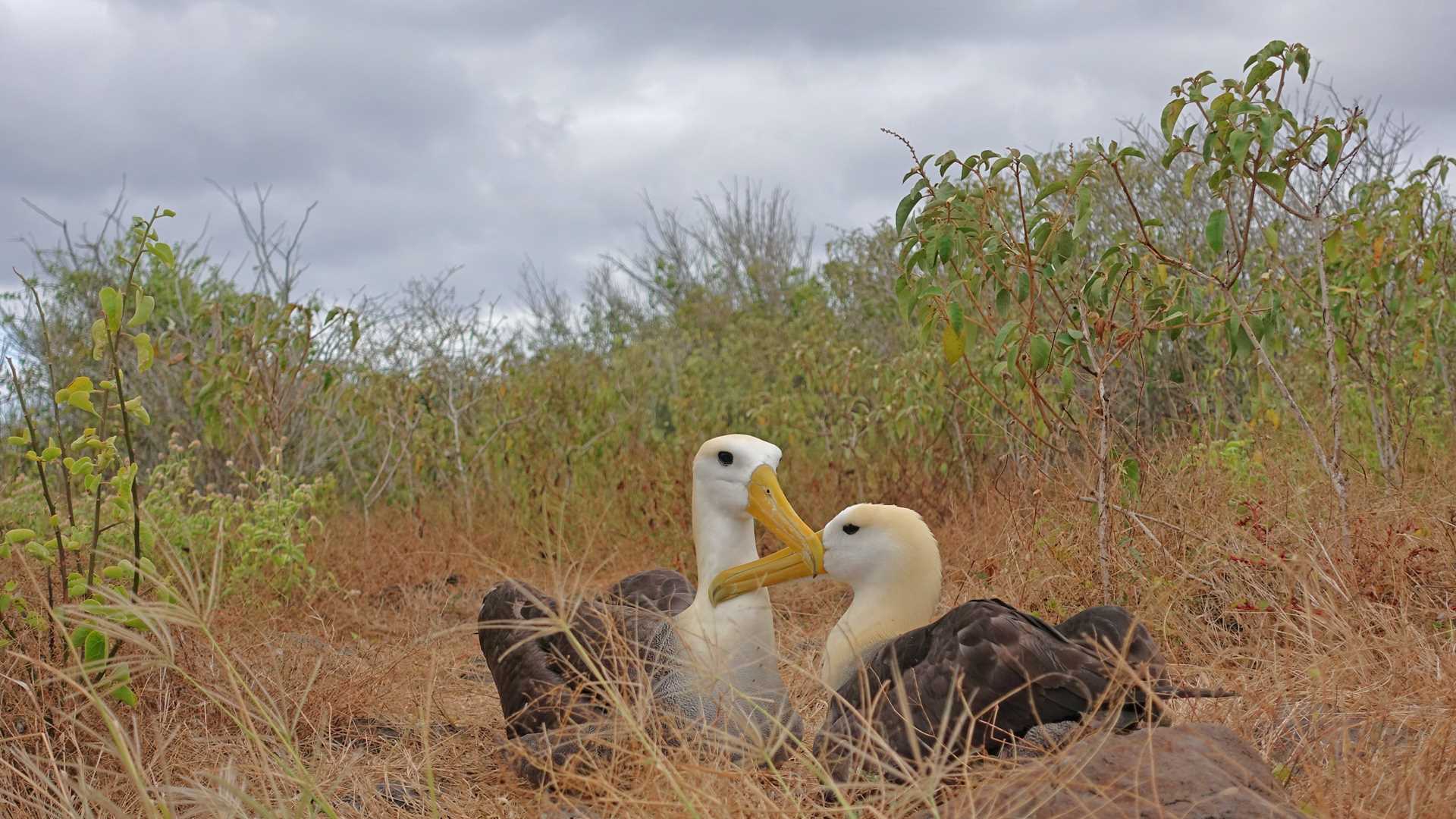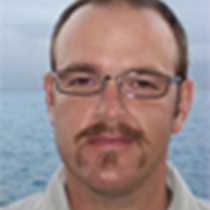We began this day dedicated to fathers in one of the most beautiful places on earth, Gardner Bay. Looking out at the turquoise waters that surrounded our floating home, we were excited to explore the undersea realm. Playful sea lions swam quickly and gracefully among the schools of surgeonfish, appearing to accept us as their curious playmates. We eventually landed on a blindingly white coralline beach, where we found hundreds of resting sea lions and Española mockingbirds searching for their daily sustenance, some of them even landing on us. The afternoon brought us even closer to the wildlife as we navigated between marine iguanas warming themselves on the volcanic rocks. Darwin finches flitted about as we continued our walk, encountering endemic lava lizards and a racer snake sunning upon the path. Arriving to the southern cliffs of Española we were surrounded by a large colony of waved albatross. It was incredible to think that this species is endemic not only to Galapagos, but to this specific island. As we returned to our ship, bright sun poked through the darkening clouds and a few Galapagos hawks watched as we leave this incredible place.
6/13/2025
Read
National Geographic Endeavour II
Genovesa Island
We started the day with excitement as we landed on the beautiful, pristine coast of Isla Genovesa - a true birder’s dream. Along the sandy beaches and steep cliffs of Darwin Bay, we were surrounded by an incredible array of birdlife. Frigatebirds soared closely overhead with their red pouches on full display, while Nazca and blue-footed boobies nested along the rocky ledges. Swallow-tailed gulls called out as we walked past. In the distance, we saw the stoic and elusive short-eared owl. The island was alive with color, sound, and constant movement. Between our excursions to Isla Genovesa, we snorkeled near Prince Philip’s Steps and discovered a vibrant world beneath the waves. Schools of fish swirled around us, a fur seal turned in the water as if dancing on cue, and sea lions relaxed nearby. As our last snorkeling adventure came to a close, we spotted a sea turtle resting calmly in a crevice. As the sun retreated into the sky on our last return to National Geographic Endeavor II, we reflected on the sheer magnitude of what we witnessed on our last full day. Isla Genovesa, like the other islands, gave us a connection to a sacred world. The harmony between land, sea, and sky reminded us how deeply interconnected, vital, and fragile these ecosystems are. Watching birds tend to their nests and marine life swim effortlessly, we were struck by how little space there is between wonder and reverence. We recognized that our journey wasn’t just about observing unique wildlife, it was about feeling part of something grander and beautifully ancient.







